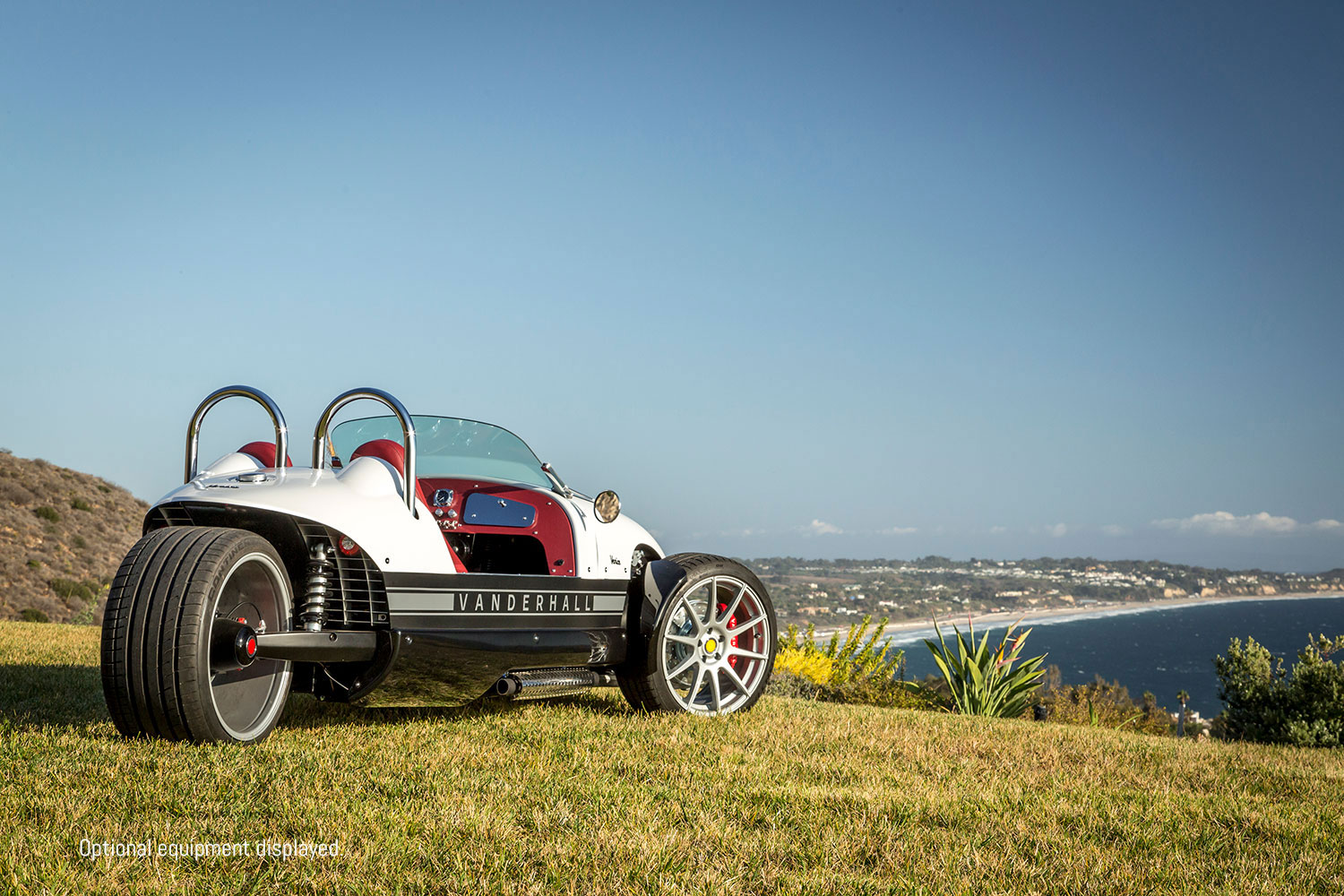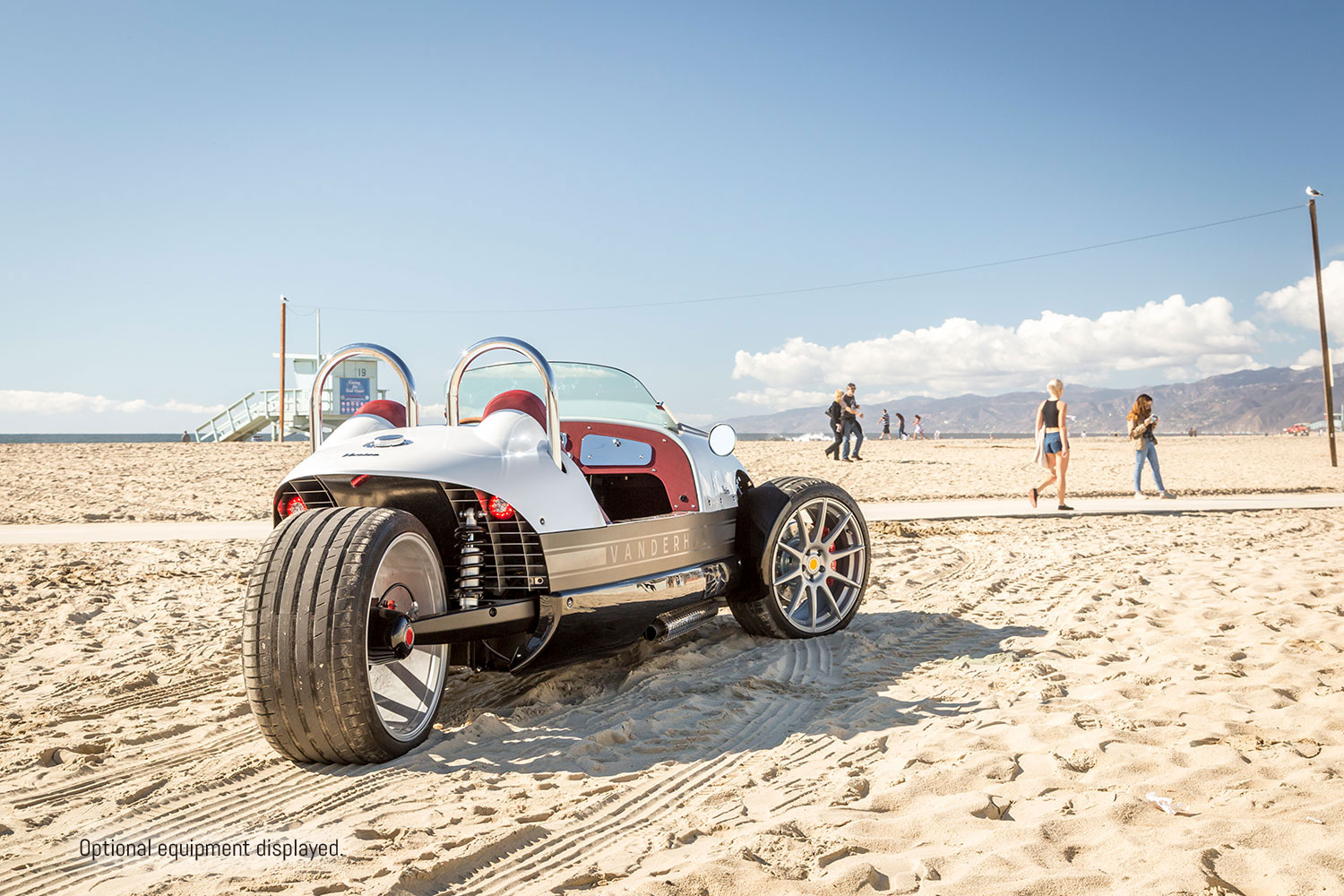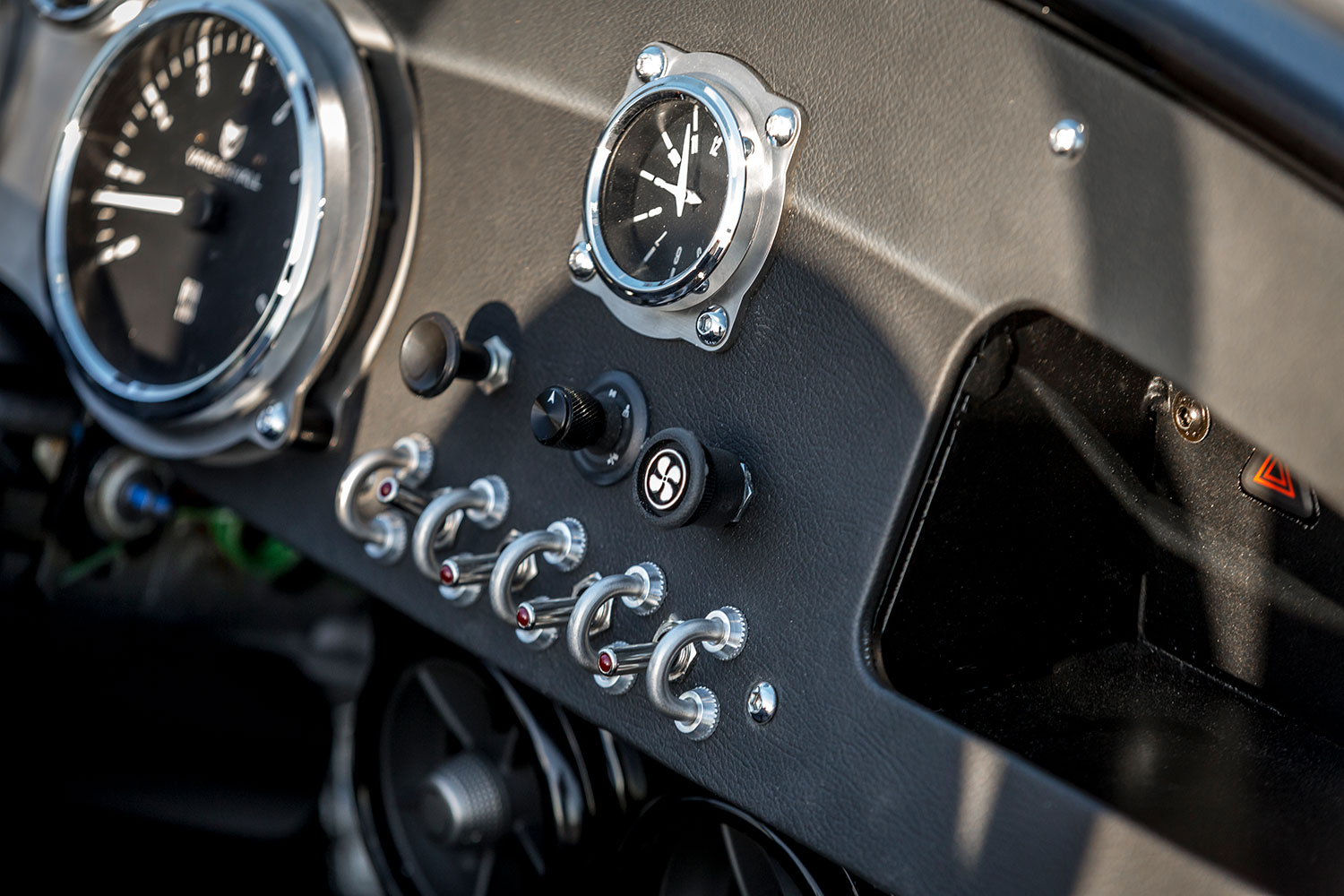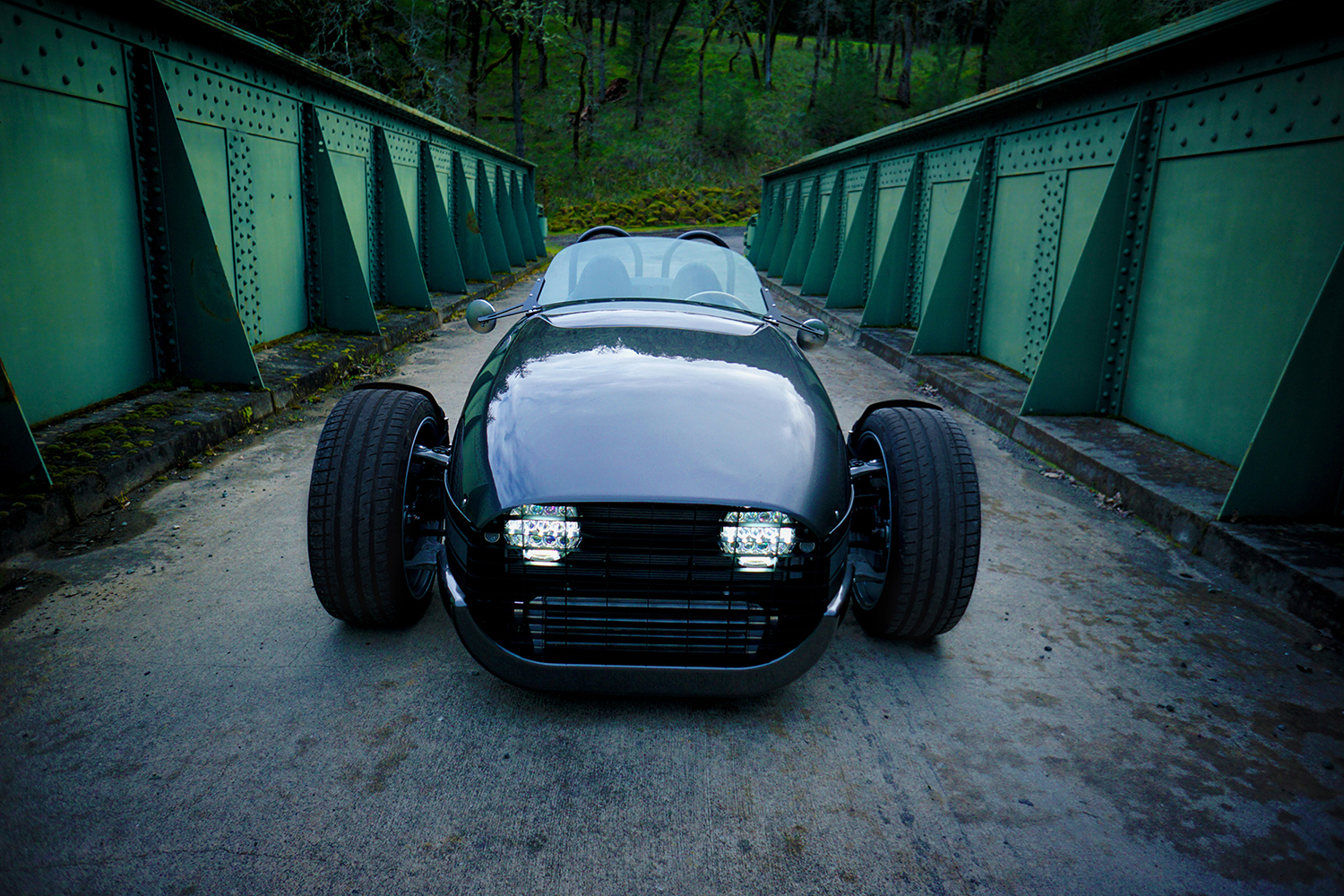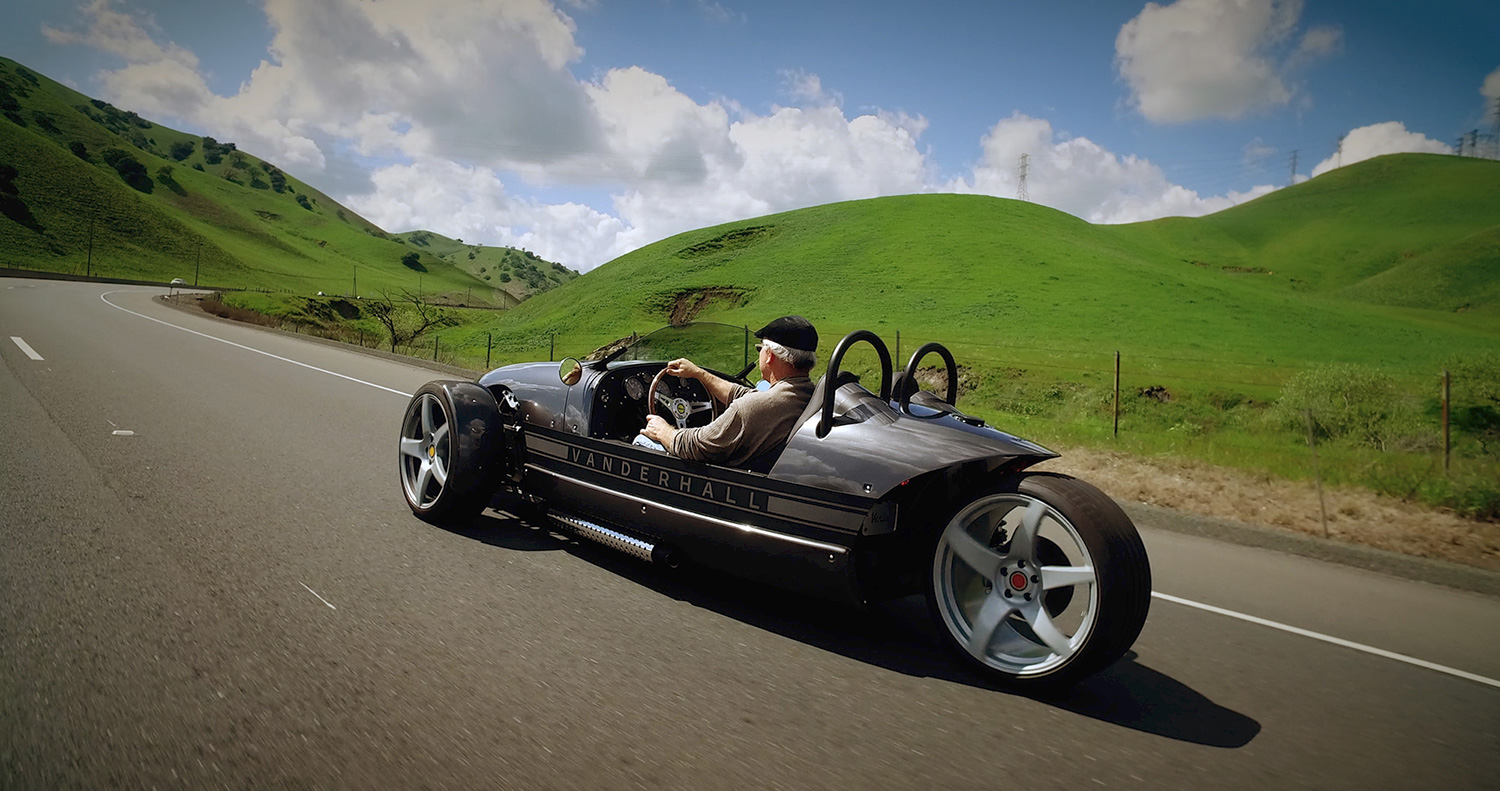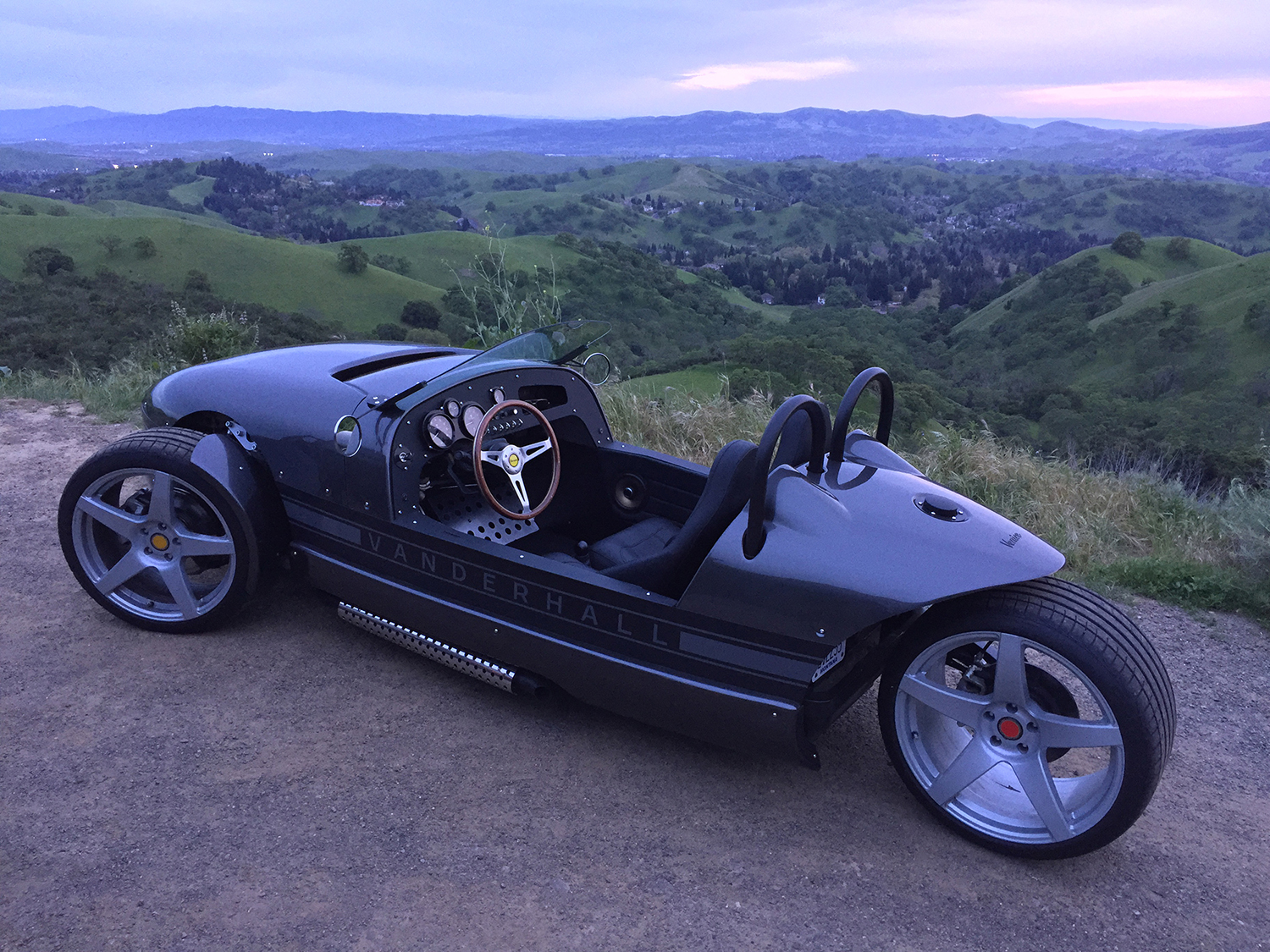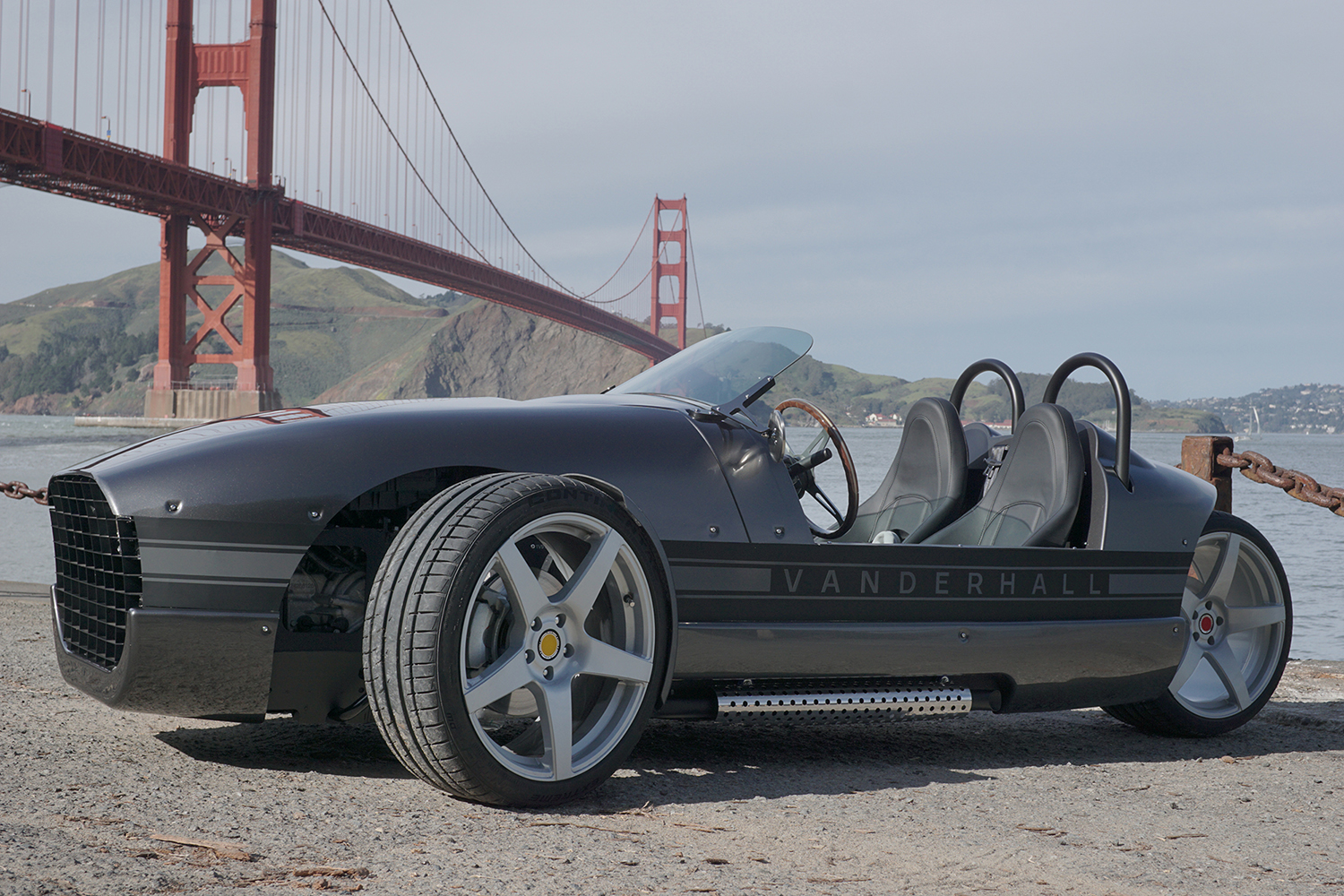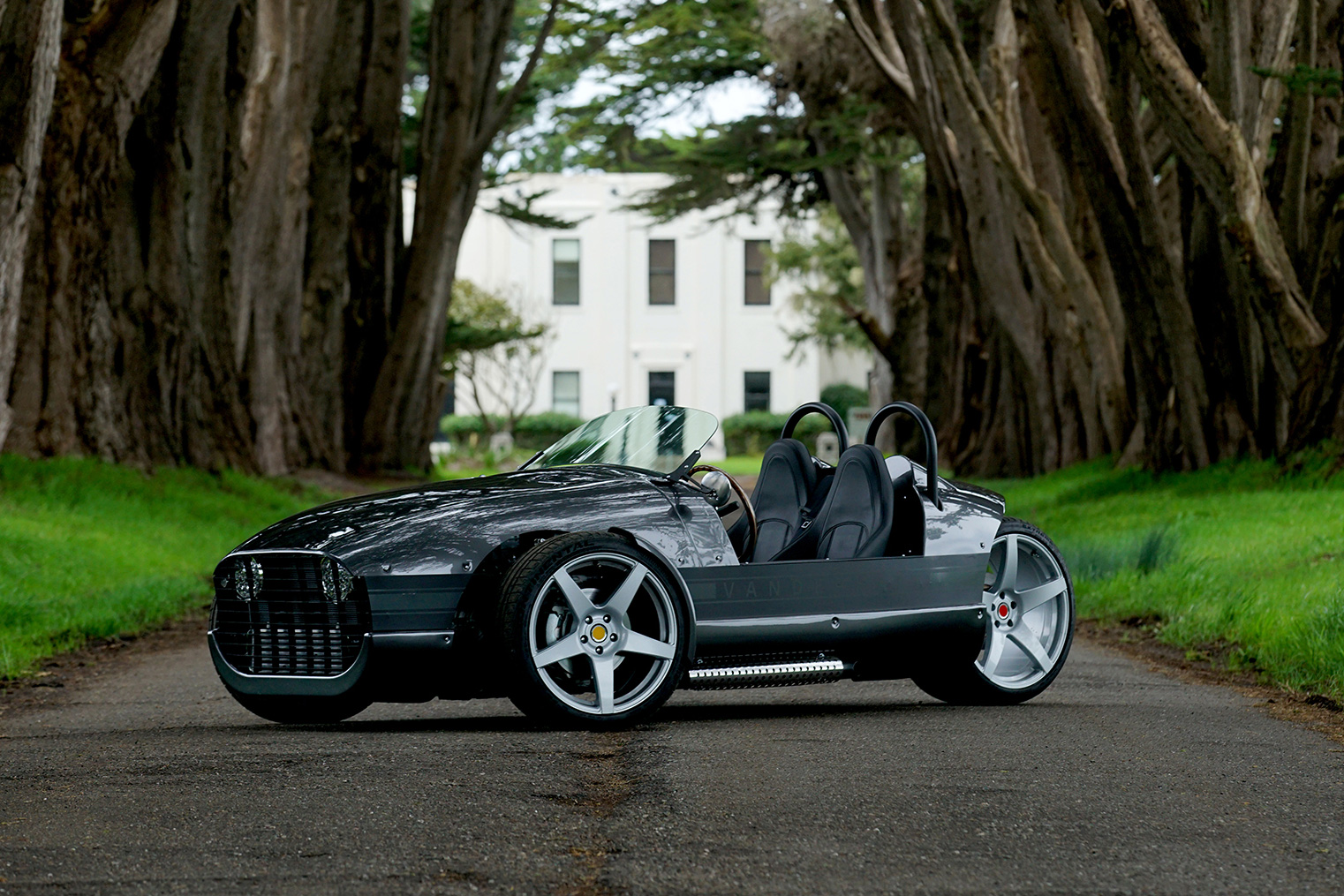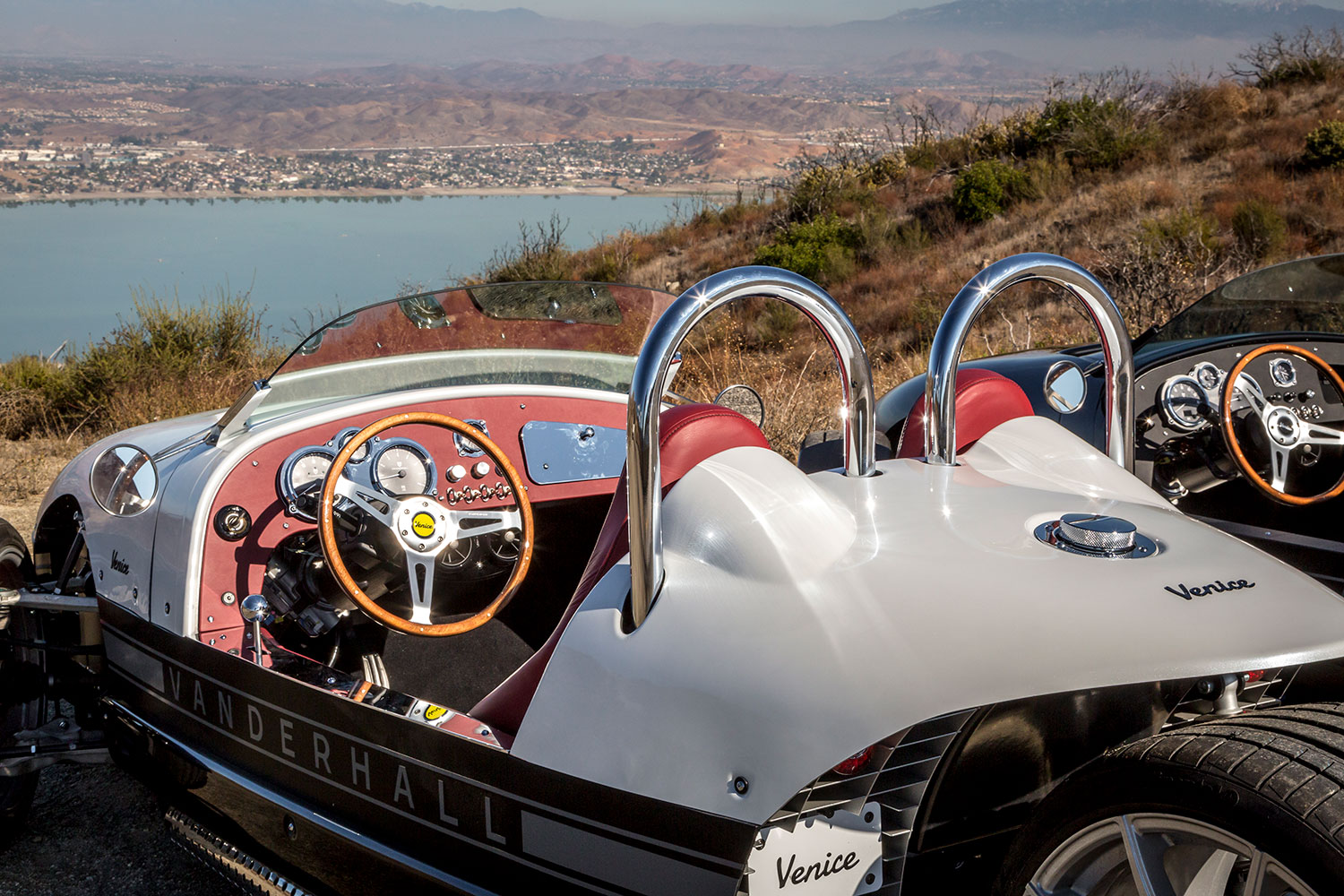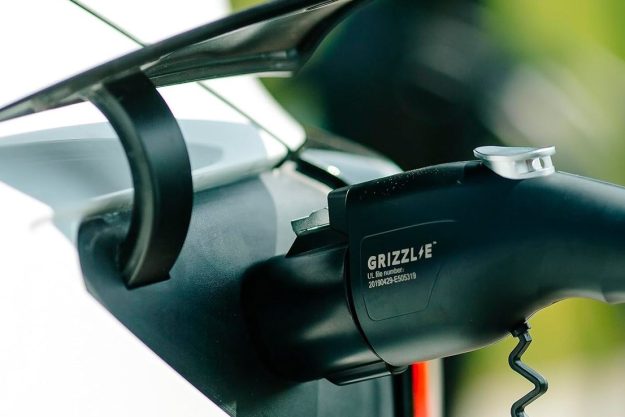Provo, Utah-based Vanderhall offers two 3-wheeler models, both side-by-side two-seaters. The Venice lists for $29,950. A limited-by-dealer-allocation Laguna Sport Premium edition starts at $58,850 and comes equipped with a list of luxury and comfort upgrades and a host of additional options if you don’t mind spending twice as much money and waiting four to six months.
The Laguna model comes with bigger wheels, a paddle shifter, and adjustable suspension, plus amenities like fenders, nicer carpeting, air conditioning, and cruise control. At near $60,000 and climbing, however, the Laguna may add bespoke customization but not much more than the already full serving of excitement on tap with the Venice.
The Venice, like the Laguna, is built on a mono-aluminum chassis. You get a formed composite body with the Venice, carbon fiber on the Laguna. Power for both models comes from a 1.4-liter inline 4-cylinder turbocharged GM Lov engine mated with a six-speed automatic transmission. According to the Robb Report, the Venice’s 1,375-pound dry weight and the 180-horsepower motor can scoot the open vehicle from 0 to 60 mph in less than 4.5 seconds.
The two-seater’s standard equipment list includes three 18-inch aluminum wheels, a wooden steering wheel, roll bars, a heater, and a 600-watt sound system. Color choices are Metallic Black, Pearl White, Metallic Gray, and Dark Red. You can reserve a Venice for $250 and a Vanderhall representative will contact you to discuss possible options. Once built, your Vanderhall Venice will be delivered via the closest dealer.
Does your automotive passion pull in more directions than your budget can handle? With its $29,950 price, the Vanderhall Venice 3-wheeler is priced like a well-equipped Mazda Miata or a top-of-the-line BMW K 1600 GTL Exclusive touring motorcycle. If you’re attracted to both the Miata and the Beemer or two similar choices but you can’t decide, maybe the Venice could be a 3-wheeled compromise.
Polaris’ Slingshot and the Vanderhall Venice share a similar configuration. Other than dealer location and service convenience — Polaris has far more dealers than Vanderhall — the choice between the two may come down to personal preference. The Slingshot looks like something Batman would drive, while the Venice is definitely more James Bond.
Editors' Recommendations
- You won’t be taking Microsoft’s HoloLens 3 into the metaverse
- The Qualcomm 3D Sonic Max fingerprint sensor lets you scan two fingers at once
- VW’s electric ID.3 will talk to you using lights straight out of Knight Rider
- Tesla Model 3 tuned in Germany is an electric car you’ll either love or hate
- Everything you missed during the Borderlands 3 gameplay reveal


